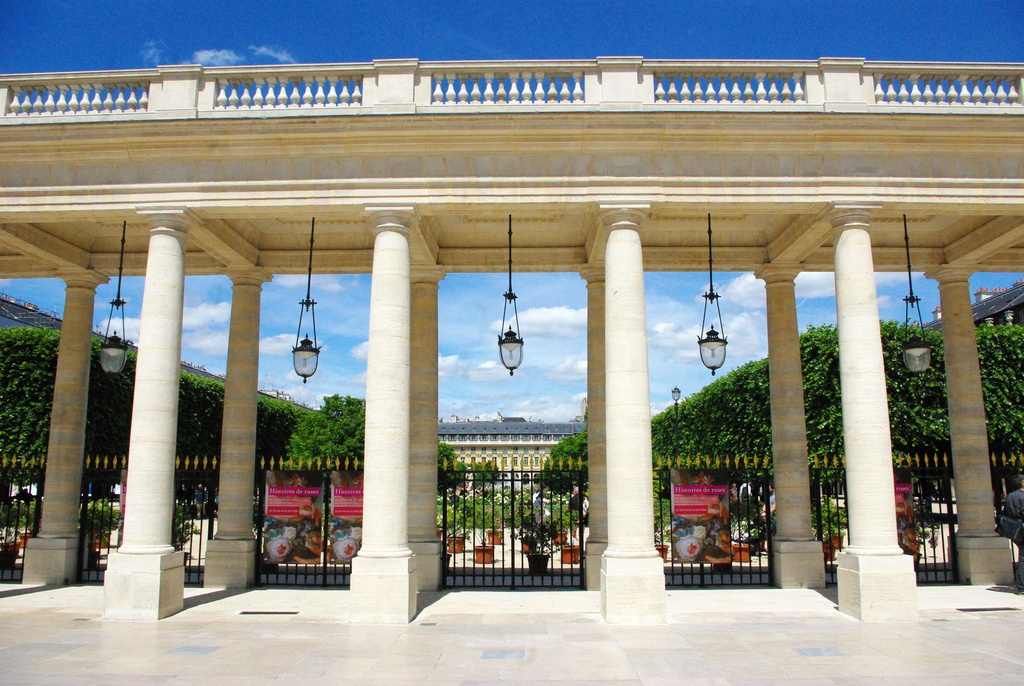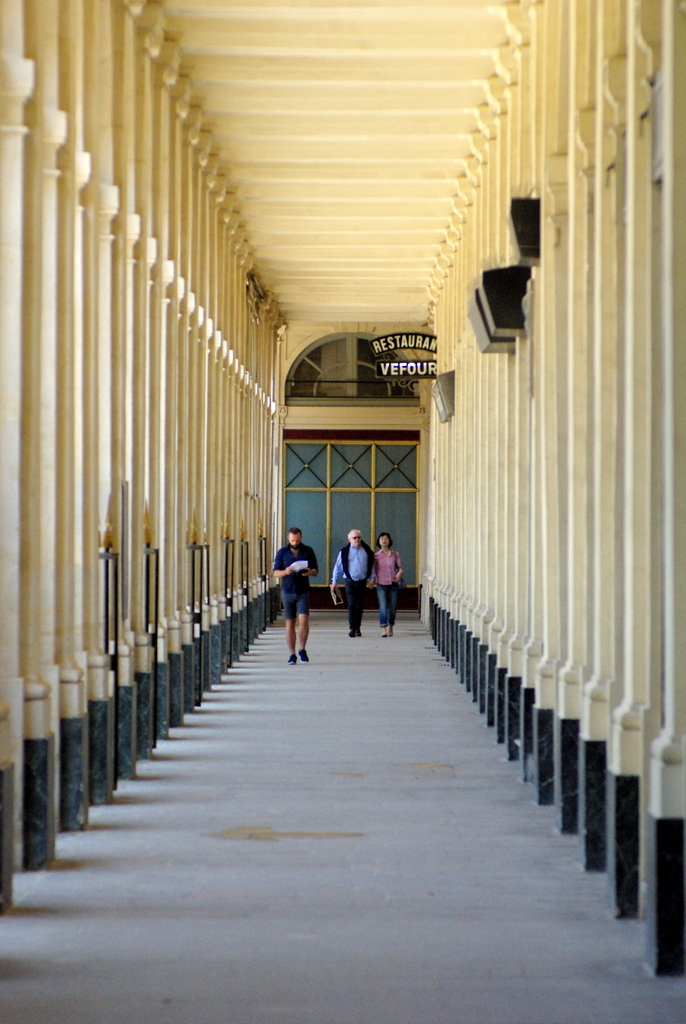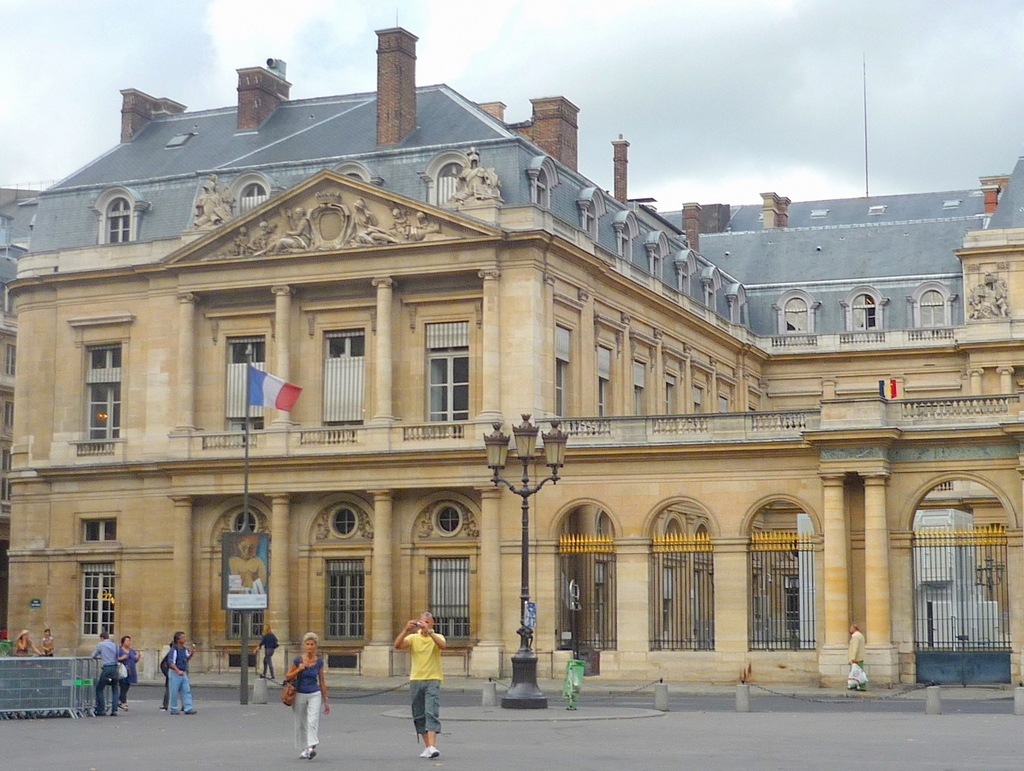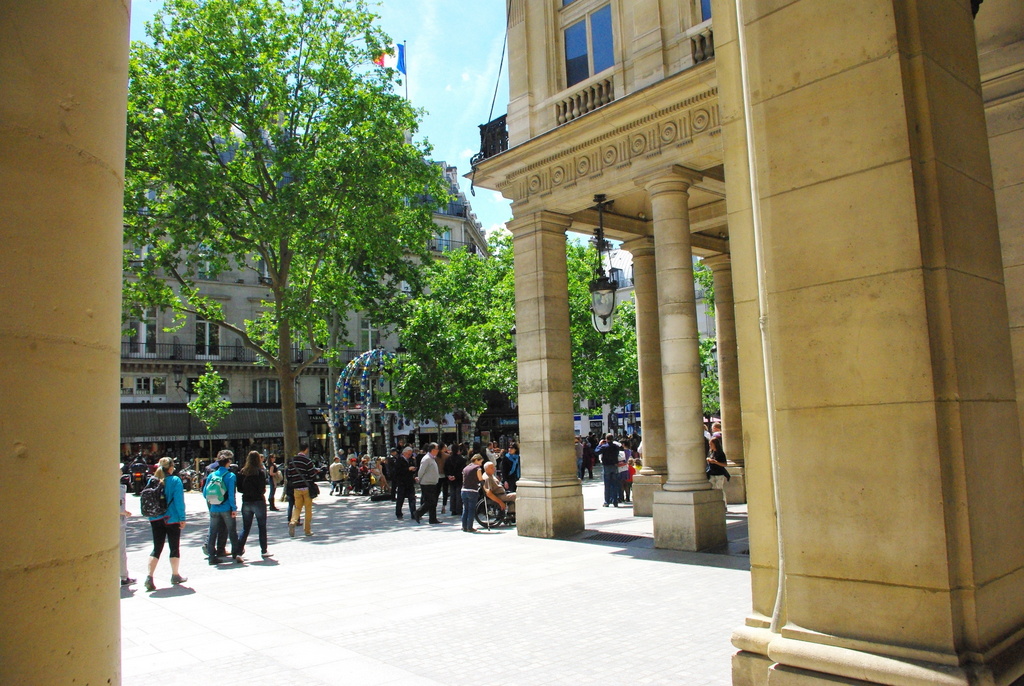Despite its name, the Palais-Royal was not the official residence of the kings and queens of France. Its original name (Palais-Cardinal) refers to the Cardinal Richelieu who had it built in the 17th century opposite the Louvre. Situated in the 1st arrondissement of Paris, the complex is a popular place thanks to its peaceful garden bordered by three arcaded galleries.
Is this a royal palace?

The palace was built from 1633-1639 by architect Jacques Lemercier (c. 1585-1654), one of the three most influential French architects (the others being Louis Le Vau and François Mansart) for the Cardinal Richelieu.
The Palais-Royal was originally known as Palais-Cardinal as it was the residence of Cardinal Richelieu from 1639 until his death in 1642.
Upon the cardinal’s death, the estate came into possession of King Louis XIII and was consequently known as “Palais-Royal”. The king died the following year and the palace was entrusted to the Queen Mother Anne of Austria who resided there with her advisor Cardinal Mazarin and her young sons, the future Louis XIV and Philippe of France.
The main residence for the House of Orléans
After the marriage of Philippe of France, Duke of Orleans with Henrietta Anne, daughter of the deposed King Charles I of England, the Palais-Royal became the main residence of the House of Orleans. The couple made the Palais-Royal the place-to-be in Paris for court gatherings and extravagant parties.
Duchess Henrietta died in 1670 and the Duke remarried to the Princess Palatine who choose to reside in the Saint-Cloud castle.
When King Louis XIV died, his 5 year old grandson (the future Louis XV) was too young to govern the country. The Duke of Orleans became Regent for the young king and the Palais-Royal became the kingdom’s power centre. At that time, the palace had the unique Orleans art collection on display with some 500 paintings. It was arranged for public viewing until it was sold at the French Revolution.
A major redevelopment in the 1780s
The Palais-Royal underwent a major redevelopment in the 1780s with the addition of buildings, and arcades, as well as a redesigned garden. The neoclassical architect Victor Louis (1731-1800) redesigned the perspective view of the garden in order to enclose it with regular colonnades lined with arcades.

Open to the public!
The garden and the arcades were opened to the public and the complex was one of the most important marketplaces in Paris, frequented by the nobility, the aristocracy, the middle and lower classes. The arcades sheltered 145 boutiques, hair salons, bookshops, museums, cafés and restaurants. The Grand Véfour is Paris’ first restaurant which opened in one of the arcades in 1784 as the Café de Chartres. Acquired by Jean Véfour in 1820, it is still operating today. Napoleon and Victor Hugo were among the famous French people who dined there.

A leisure centre too!
The Palais-Royal included one of Paris’ most popular theatres, the Théâtre du Palais-Royal, used by the troupe of Molière from 1660. At the death of Molière, music composer Jean-Baptiste Lully took over the place to create his Royal Academy of Music, the official name of the Paris Opera.
The southwest corner of the Palais-Royal houses the Comédie-Française, designed by Victor Louis and built between 1786 and 1790.

A change of affectation…
The palace was confiscated in 1793 and was called “Palais du Tribunat”. At the Bourbon restoration, the Palais-Royal reverted to the House of Orleans. Under the reign of Napoleon III, the palace was the resident place for the cadet branch of the Bonaparte family.
The Palais-Royal today
Today the palace includes the Council of State (Conseil d’État), the Constitutional Council (Conseil Constitutionnel), and the Ministry of Culture (Ministère de la Culture). It is best seen from the Place du Palais-Royal with its central block and two recessed lateral wing.

The palace is not opened to the public.
Find out more about the Palace’s Gardens and the Buren Columns.






